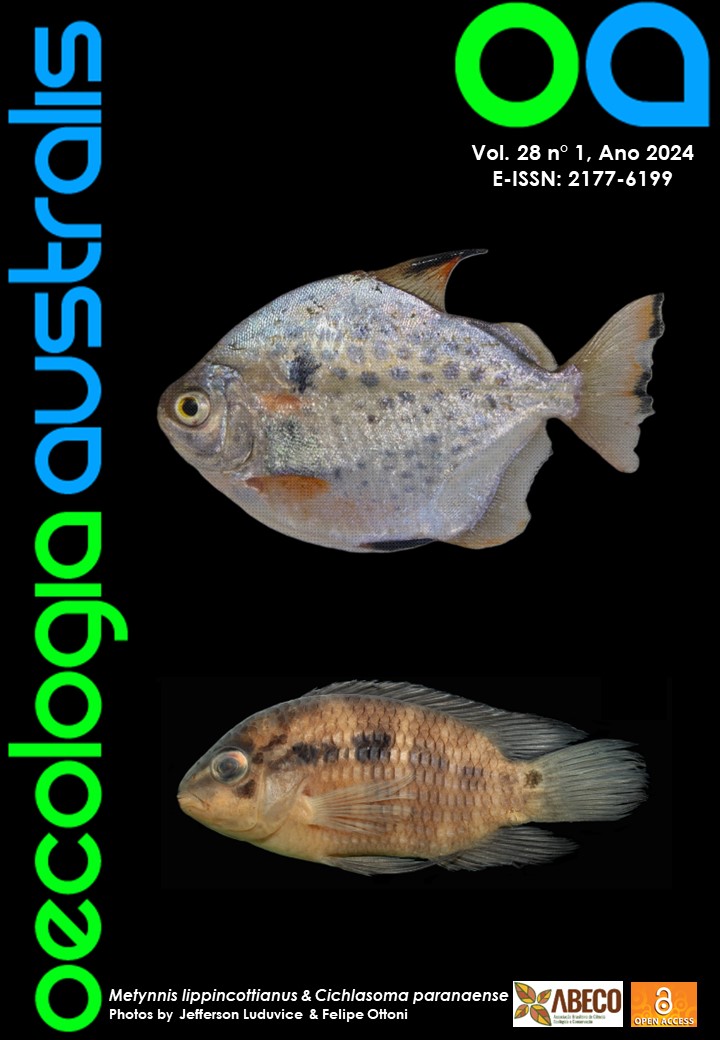GRAMADOS URBANOS: A SURPREENDENTE DIVERSIDADE DE ESPÉCIES ENCONTRADA NO CAMPUS DO VALE DA UFRGS (RS, BRASIL) E SUAS POTENCIALIDADES
Fitodiversidade dos Gramados do Campus do Vale da UFRGS
Keywords:
diversidade nativa, ecologia urbana, roçadas, vegetação ruderal, vegetação urbanaAbstract
Em ambientes urbanos é encontrada uma flora chamada de ruderal, composta por plantas exóticas e nativas, que geralmente é pouco estudada e considerada em termos de importância para a conservação da biodiversidade e qualidade ambiental das cidades. O objetivo deste trabalho foi caracterizar a vegetação de gramados do Campus do Vale da UFRGS, e discutir sobre potenciais usos desses espaços pela comunidade acadêmica. Foi realizado um levantamento qualiquantitativo da vegetação em cinco gramados, com cinco parcelas de 1 m2 em cada. As plantas encontradas foram identificadas e classificadas quanto a sua origem (se nativa ou exótica) e forma de vida. A lista obtida nos levantamentos foi comparada com a lista de espécies da flora dos morros graníticos de Porto Alegre para avaliar até que ponto os gramados abrigam espécies típicas da vegetação nativa campestre da região. Para entender a influência dos parâmetros estruturais (cobertura e altura) na composição florística foi utilizada uma análise de redundância (RDA). Foram encontradas 101 espécies distribuídas em 25 famílias botânicas; destas, 69 também ocorrem nos campos dos morros de Porto Alegre. As famílias com maior riqueza de espécies foram Poaceae e Asteraceae, já as com maior cobertura relativa foram Poaceae e Apiaceae. As formas de vida touceira e terófita foram predominantes, com alta participação de espécies rosetadas e rizomatosas, indicativas do regime de roçadas frequentes atualmente empregado no manejo dessas áreas. Na RDA, foi constatado uma diferenciação de um dos locais que possui uma vegetação mais alta, com maior proporção de espécies entouceiradas. A alta proporção de espécies exóticas, incluindo invasoras e terófitas também revela a ruderalização desses ambientes. Uma mudança no manejo como a diminuição na frequência das roçadas poderia contribuir para uma maior diversidade nativa nesses espaços, possibilitando um melhor uso em atividades de ensino, divulgação, extensão e valorização da biodiversidade nativa.
The flora of urban environments has a ruderal character and may contain exotic and native plants species. This flora tends to be little studied and even less considered in terms of biodiversity conservation and environmental quality of cities. The objective of this study was to characterize the vegetation of urban lawns located at Campus do Vale (UFRGS), in Porto Alegre, RS, Brazil, to evaluate the potential uses of these spaces by the academic community. We conducted qualiquantitative vegetation sampling in 1 m2 plots in five different areas of lawns, with five plots per area. The plants found were identified and classified according to their origin (native or alien species) and life forms. To determine the participation of typical native grassland species in the lawns, we compared our species list to an available species list for grasslands in the granitic hills of Porto Alegre. To understand the influence of structural vegetation parameters (cover and vegetation height) on the floristic composition, a redundancy analysis (RDA) was used. 101 species distributed in 25 families were found, 69 of these can be found in the grasslands in the granitic hills of Porto Alegre. The families with the highest species richness were Poaceae and Asteraceae, and the families with the highest relative cover were Poaceae and Apiaceae. Tussock and therophyte life forms were predominant, but the high proportion of rosette and prostrate plants is indicative of the regime of frequent mowing. In the RDA, one site with higher vegetation was separated from the other sites. The high proportion of exotic species, including some invasive ones, and therophytes reveals the ruderalization of these environments. Decreasing the mowing frequency would probably lead to a plant community with greater similarity with native grasslands, thus allowing better use of the lawns for teaching native biodiversity.


